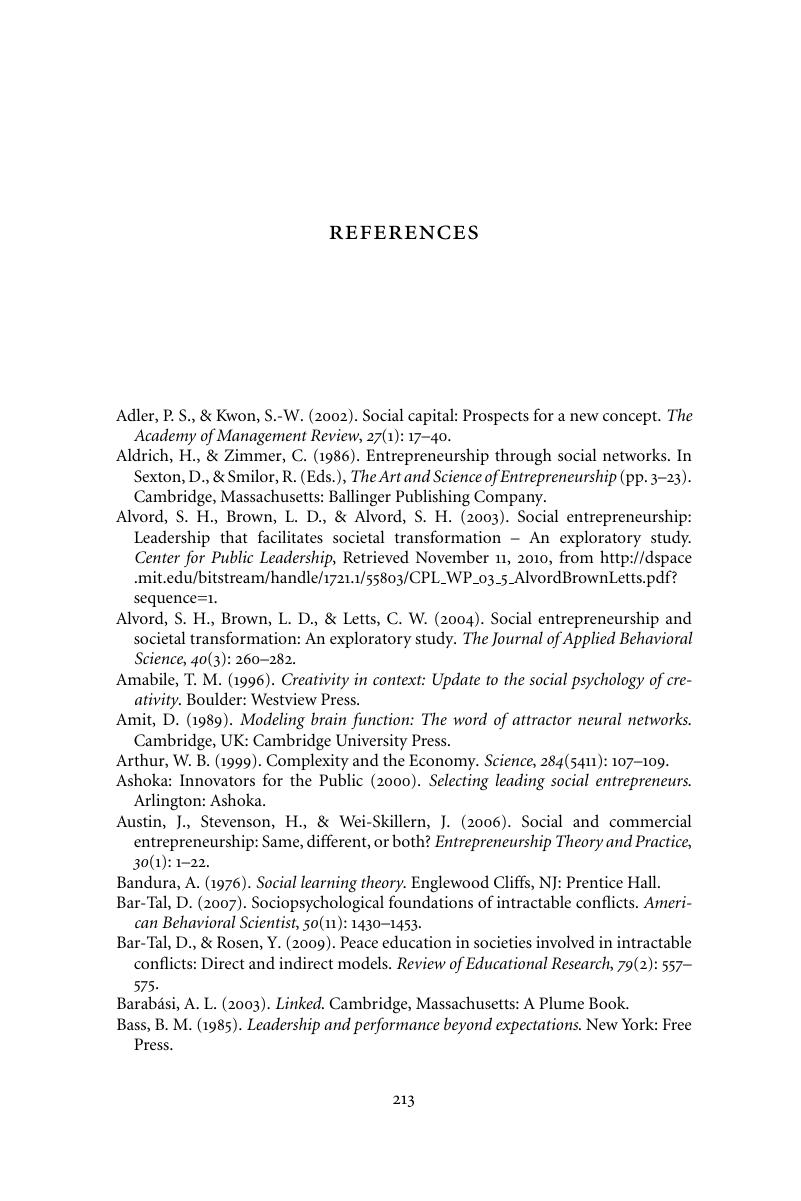Book contents
- Frontmatter
- Contents
- List of figures
- List of photos
- Preface
- Acknowledgments
- Section I Social entrepreneurship
- Section 2 The dynamics of social change
- Section 3 Social capital built by social entrepreneurs
- Section 4 A new kind of leadership
- Epilogue The Past and the Future
- Conclusion
- Appendix 1 Becoming a Social Entrepreneur
- Appendix 2 The Process of Assessing Candidates for a Fellowship
- Appendix 3 Excerpts from Interviews
- References
- Index
- References
References
Published online by Cambridge University Press: 05 June 2012
- Frontmatter
- Contents
- List of figures
- List of photos
- Preface
- Acknowledgments
- Section I Social entrepreneurship
- Section 2 The dynamics of social change
- Section 3 Social capital built by social entrepreneurs
- Section 4 A new kind of leadership
- Epilogue The Past and the Future
- Conclusion
- Appendix 1 Becoming a Social Entrepreneur
- Appendix 2 The Process of Assessing Candidates for a Fellowship
- Appendix 3 Excerpts from Interviews
- References
- Index
- References
Summary

- Type
- Chapter
- Information
- Social EntrepreneurshipTheory and Practice, pp. 213 - 224Publisher: Cambridge University PressPrint publication year: 2011



